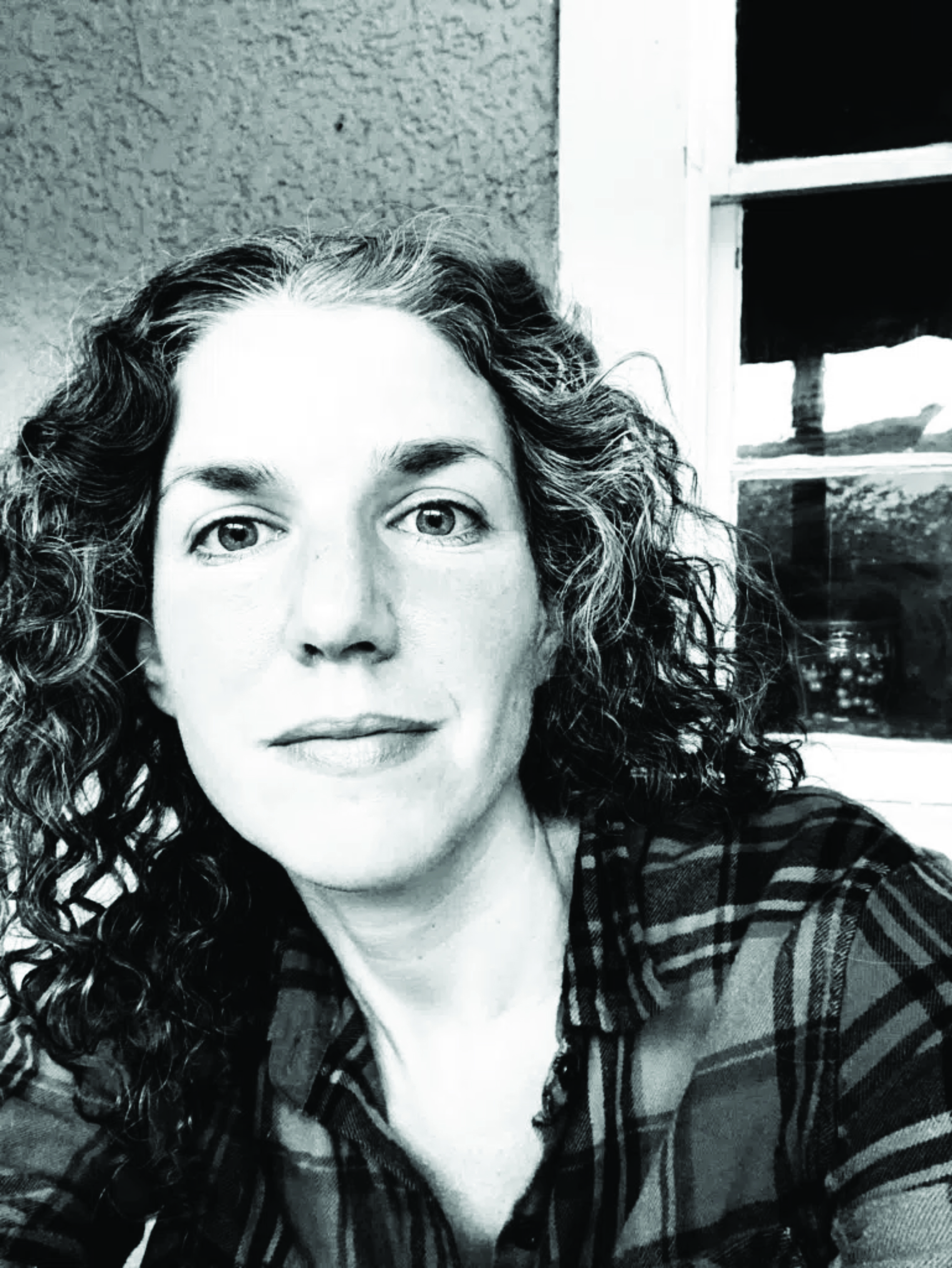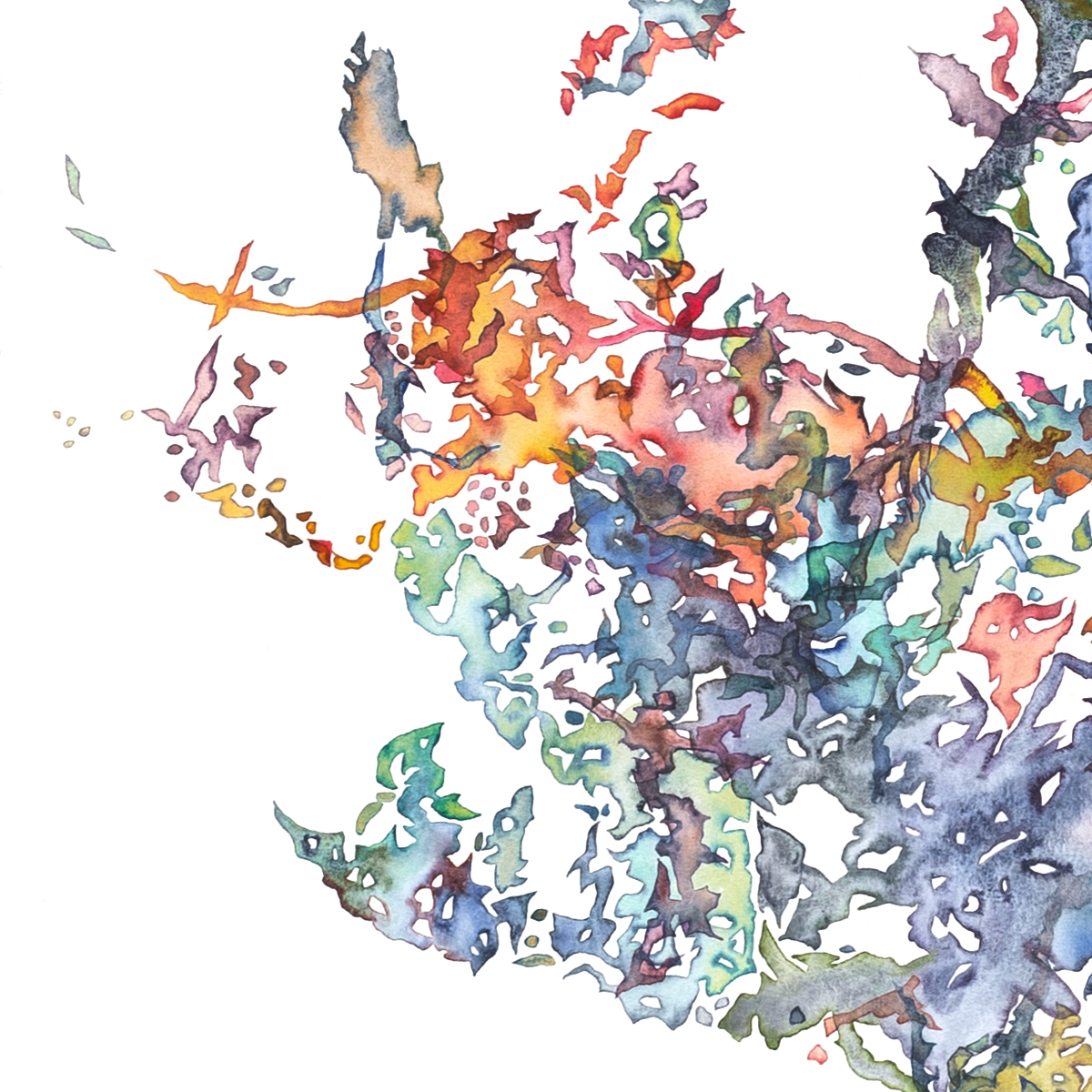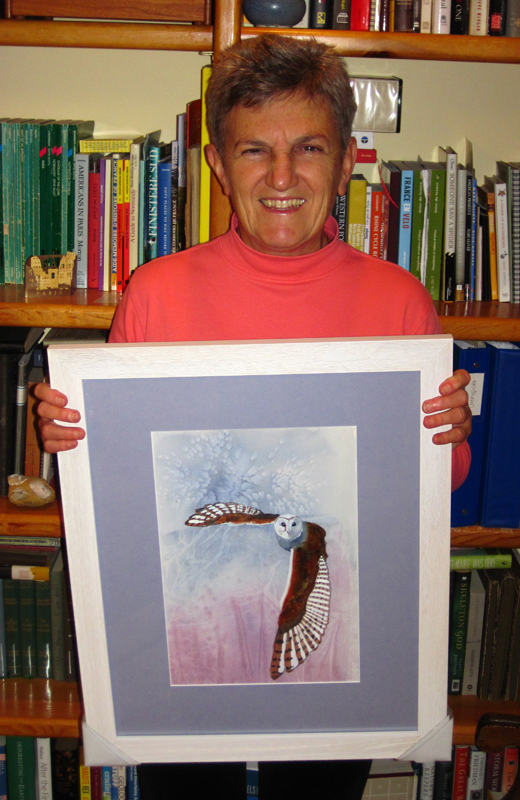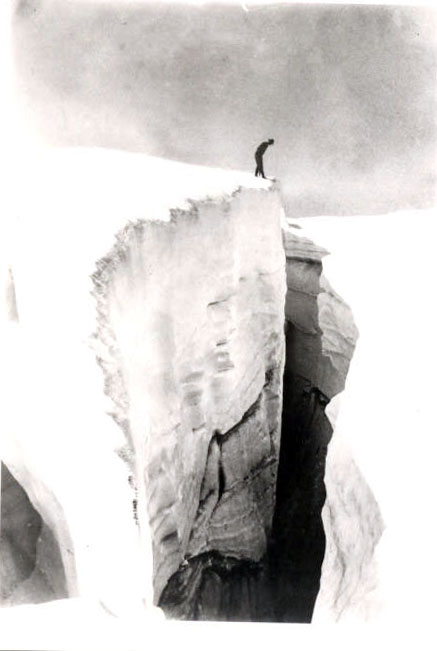Oregon artist Daniela Naomi Molnar pioneered the notion that art can speak to climate change. A former art director at Scientific American, Bear Deluxe, and Bitch magazines, Molnar played a central role in founding two art and ecology institutions in Oregon—Signal Fire, a Portland-based nonprofit, and the Art + Ecology program at Pacific Northwest College of Art (now part of Willamette University). Her artistic practice, which includes visual art and poetry, focusses on climate change as an experience of grief.
Molnar was born to a Conservative Jewish family in Queens, New York, on July 26, 1979. Her mother immigrated from Romania and her father from Hungary. She was close to her grandparents, all four of whom were Holocaust survivors. Molnar’s family life was characterized by two elements that inform her artistic practice—a sense of mourning and her grandmother's conviction in the importance of art. Rosalie Leb told her granddaughter that she had survived Auschwitz by composing poems in her mind and endlessly repeating them.
Molnar was discouraged from pursuing fine art as a profession. She completed her high school coursework a year early, and took a train to the West Coast to explore. When she eventually enrolled at Evergreen State College in Olympia, Washington, in 1999, there were no academic programs in the United States that combined art and ecology. (Now there are more than a dozen, including one at Oregon State University.) At Evergreen, Molnar cobbled together a degree in botany, environmental studies, and art. She followed that academic work with a graduate certificate in Scientific Illustration at the University of California, Santa Cruz in 2006. She began teaching at the Pacific Northwest College of Art in Portland in 2007. Her training, which was highly technical, focused on realism, but Molnar’s practice soon became more conceptual. She now describes her primary medium as “place,” and her materials are largely foraged from Oregon's public lands.
One of Molnar’s series, New Earth, is a suite-in-progress of some thirty paintings. She was inspired to begin the paintings after seeing time-lapse images of Eliot Glacier on Mount Hood. The glacier has been shrinking dramatically, and the documentation of that decline caught her eye. As the Los Angeles Times later reported, Molnar's initial goal "was to draw attention to climate change and give shape to an often-abstract issue.”
Each New Earth painting overlays craggy shapes in delicate colors, tracings that are meticulously culled from NASA satellite imagery. As glaciers melt, raw patches of earth are exposed—pieces of terra firma that Molnar compares to wounds. She traces the patches, scales them down, and then outlines their contours with watercolor paints made from powdered elk bones, berries, brick, carbonized devil’s club, and metal trash. By layering one watercolor shape on top of another, she creates an aggregate map of loss. The series, which has been exhibited in New York, Portland, and Boise, has no foreseeable end.
In 2008, Molnar helped Amy Harwood, Ryan Pierce, and others to establish Signal Fire as a way to connect artists and climate activists. Five years later, she helped launch Signal Fire’s immersive art education program in the Oregon backcountry. As an associate professor at Pacific Northwest College of Art in 2017, Molnar founded Art + Ecology, one of the first such programs in the nation. She returned to graduate school and earned an MFA in poetry from Warren Wilson College in Swannanoa, North Carolina, and is now a practitioner of ecopoetics, which examines human complicity in planetary disaster. Her recent collection of poems, CHORUS (2022), won an award from the Omnidawn First/Second Poetry Book contest. She is also the recipient of grants and fellowships from Western States Center, Oregon Arts Commission, and Regional Arts & Culture Council. She currently teaches at PLAYA in Summer Lake, the Sitka Center for Art and Ecology near Lincoln City, and Literary Arts in Portland.
Molnar believes that artists are uniquely able to convey the experience of mourning a world going extinct. People have yet to reckon with the scale of loss, she insists, and “massive systemic change” may be on the other side of grief. “Through grief,” Molnar has explained, “you mourn something gone, but you also move into a different depth of connection.” From her studio in southeast Portland, she teaches, writes, and develops new work about climate change and the transformative potential of ecological grief.
-
![]()
Daniela Naomi Molnar.
Courtesy Literary Arts -
![]()
Related Entries
-
![Climate Change in Oregon]()
Climate Change in Oregon
Within a few hundred miles in Oregon, you can see snowy volcanoes, parc…
-
![Dominique Bachelet (1957–)]()
Dominique Bachelet (1957–)
Dominique Bachelet is a climate scientist and science communications sp…
-
![Glaciers in Oregon]()
Glaciers in Oregon
Glaciers and permanent snowfields—found in many western states, includi…
-
![Pacific Northwest College of Art]()
Pacific Northwest College of Art
Pacific Northwest College of Art (PNCA), founded in 1909 by the Portlan…
Map This on the Oregon History WayFinder
The Oregon History Wayfinder is an interactive map that identifies significant places, people, and events in Oregon history.






